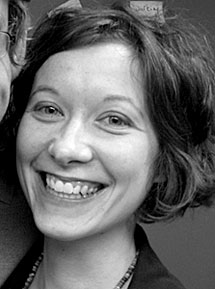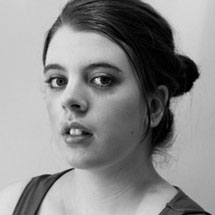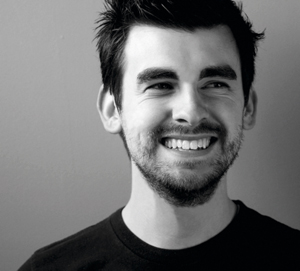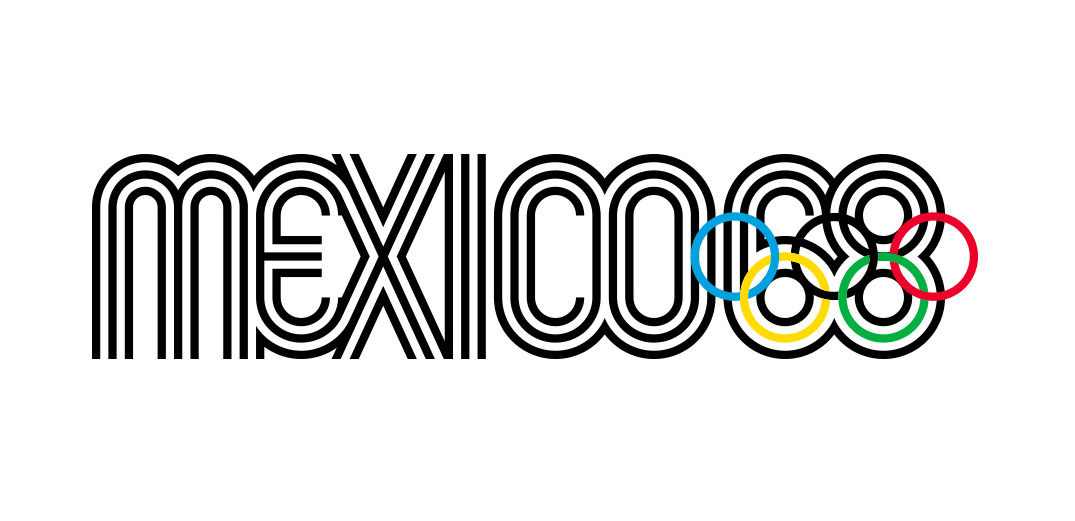Big question: what do you think of Google's new design strategy?
Google has recently redesigned its suite of products. What does our panel of experts think of this face-lift and what it implies about the company's changing priorities?

Johanna Kollmann
johannakoll.posterous.com
In the last 24 hours I experienced two moments of delight with Google: I discovered the chat functionality within Google Docs, and was pleasantly surprised by how comments are integrated. Being a heavy user of not only Gmail, but many of their other collaboration tools, I couldn’t believe that I hadn’t discovered this earlier! While Google uses ‘bubble’ overlays to highlight changes and actions, I still feel that I’m missing out on some brilliance due to a lack of discoverability and I simply don’t see it, even when it’s there, on the screen.
My Google tools are functional and feature some nice interaction design. Now, I’m excited to see that Google is seriously investing in visual design, with potential usability benefits. In their blog, the team behind the changes explains that one purpose of the new design is to allow me to focus and get all the clutter out of my way. Comparing the old and new Gmail design, I’m very happy to see that the advert on top of the message I’m viewing is gone. It feels calmer and colour is used to highlight the most important functionality.
But for me, the real success measure of the new design is its ability to help me to not only do what I know I want to do faster, but to make it easier to discover the functionality I need but wasn’t aware of. If removing visual clutter means I’ll see the actions I blanked out before, then they’re getting it right.
Johanna is the senior UX consultant at EMC Consulting in London

Anna Dahlstrm
annadahlstrom.com
Google seems to be taking a holistic design approach across each of their products and on paper the three principles behind their changes are great.
With the overwhelming amount of information we are subject to it will become increasingly more important to easily get to the content you’re after and automatically filter out the rest. Equally users’ expectations on continuing their journeys across devices will increase so the ‘Focus’, ‘Elasticity’ and ‘Effortless’ principles are most certainly key ones.
Get the Creative Bloq Newsletter
Daily design news, reviews, how-tos and more, as picked by the editors.
Their approach to rolling out the new Gmail inboxes where they make each of the different types available on page and, after a set period of time, default to the one the user uses the most and hides the rest, is a method that I hope we’ll see more of when it comes to rolling out and letting users try new functionality.
Personally, I’m excited to see what else they’re working on and what the experience will be like.
Anna is a freelance user experience designer

Shane S Mielke
shanemielke.com
Allowing users to configure their experience based upon their needs is always a good move, especially in the ways Google is doing it. You expect it out of expensive desktop applications like Adobe products that have workspaces and customisable interfaces to streamline workflow depending upon your job. Unfortunately it’s seen less often in web apps where project budgets and deadlines often leave enhanced features on the drawing board.
Google is doing an impressive job of keeping their products to brand in simplicity but also opening up opportunities to do subtle customisation of functionality, layout and colour across their products. It shows Google is being active and observant in the trends of the people using their software.
Shane is designer and creative director at 2Advanced

James Bates
clearleft.com
Overall I think they’ve done a pretty good job. I think the move to standardise and reduce complexity, while offering better consistency across a wider range of devices is a good one – and in most cases it seems to work well.
I personally like the grey bar, but I can see why some people find it more distracting rather than less. Although I think this will fade over time as people get used to it. The addition of the secondary colour palette to distinguish important calls to action and Google’s own links is a nice touch.
That said, the new ‘preview’ mail themes are less effective. Here they’ve removed so much that it's now difficult to scan the page and differentiate between content and controls.
James is a user experience designer at Clearleft

Elliot Jay Stocks
elliotjaystocks.com
The design of Google’s products has been crying out for some love for a long, long time. Gmail looks better by miles and Google Maps is perhaps the most attractive of all the redesigns: the clutter has gone and a gentle amount of ‘cool’ has been applied.
And although it’s a drastic move, I like the product-wide new black bar: it stamps a sense of unity across the Google smorgasbord. In my opinion, the redesign isn’t there just yet, but it’s a massive step in the right direction.
Elliot is a designer and illustrator

Rob Mills
bluegg.co.uk
I think Google are getting it right and the details in their blog posts offer a good insight into the thinking behind their design decisions. They have adopted the ‘evolution’ rather than ‘revolution’ approach which means the considered and sometimes subtle changes they’re making allow for continuous improvement.
Consistency across all Google products is very much welcomed and it’ll be interesting to see what improvements are rolled out next.
Rob is studio manager for creative agency Bluegg

Sophie Dennis
www.cayenne.co.uk
I love the simple, content-first approach. It’s great to see Google eschewing ‘hot’ and ‘trendy’ in favour of their own, distinctive, completely on-brand design aesthetic. It’s subtle, classic, and completely aligned with their longstanding brand values – get people to the information, then get out of their way. All much harder to achieve than it looks, and a sign of a mature design understanding at work.
It’s also a great example of a re-align. With Search I think many people will have barely noticed the changes, beyond a vague sense that it’s subtly clearer. In the midst of a busy day, it certainly took me a while to clock that anything had changed.
I’m also excited to see the poster-child for the ‘undesign’ aesthetic grow up and show the world that good design is the friend, and not the enemy, of clarity. Areas like Reader and Groups which are as yet untouched now stand out as the ugly, confusing mess they are. Hopefully this helps put another nail in the ‘undesign’ coffin.
Sophie Dennis is the cofounder and creative director of Cayenne Web Development

Leisa Reichelt
disambiguity.com
If Google’s design strategy is to basically make Google interfaces more beautiful then yes, I think this is definitely A Good Thing.
I’ve been using the Google Calendar interface for the last couple of weeks and it makes me long for the day that I log in to find that the new design has been switched on for Gmail. It feels a million times better than before – it has a more spacious, lighter, clearer feel to it that creates a much more pleasant working environment and even without any significant functional changes, makes the software feel like it works better.
I could live without the circles, but that’s probably a whole other Big Question, right?
Leisa is a freelance user experience consultant

Chris Coyier
chriscoyier.net
I think the recent changes have been fantastic. It feels like an iteration, but a really good one that reconsidered every detail and made things cleaner, smarter and more consistent between their products. They should be proud and other designers should look to this as an example of how iterative design should work.
Chris is a web designer working at Wufoo

Rachel Shillcock
www.rachilli.co.uk
It’s our natural tendency to hate change – it’s almost in our nature. When I first saw the dark grey bar at the top of Google’s homepage I was almost ready to run screaming for the hills, but then I started to take notice of all the other changes Google had implemented.
Google stated that their “goal is to give you a more seamless and consistent online experience”. You can really tell that the team at Google have thought carefully about this step and tried to create this unified area online where, to be honest, it doesn’t even feel like we’re moving from one product to another.
We all know of the failed re-designs and re-brands that go around – AOL and Gap are two that come to mind - but it makes a refreshing change to see a company getting it right for once. Not only is the design more up-to-date but it’s a dream to use and is very streamlined - theres no messing about. Plus it just looks simply beautiful. At the same time, though, you can tell that Google have a clear focus on where they want to go. And I, for one, can’t wait to see where that leads us.
Rachel Shillcock is a freelance web designer

Nick Francis
www.brightwurks.com
I admire what Google is doing. Their products absolutely need the visual refresh. It will be criticised a great deal, change is always criticised, but I like that they have the guts to proceed and continue innovating in their products.
The thing to remember about Google is that they test and re-test everything. The visual redesign is merely step one in a long process of testing, measuring results, then trying again. Whatever they don’t get right, they will eventually. They will adjust and these designs will be a huge step forward for Google in the end.
Nick creates web-based products at Brightwurks, a design agency in Boston

Jonathan Smiley
zurb.com
I think Google’s new aesthetic is a breath of fresh air for a company that, for too long, has predominantly focused on the technical prowess of their services.
The new design is extremely minimal but reasonably attractive – we get a shiny new face for their apps, and at the same time they conserve mobile bandwidth and can much more easily scale the UI for different devices. There’s a few rough edges, but I’m on board.
Jonathan is a design lead at ZURB

Nathan Smith
sonspring.com
Google has really stepped up their game as of late. Previously berated as a company that “doesn’t care about design” there now seems to be a shift in sentiment, towards rooting for Google+ to succeed. Whereas, previous forays into the social space (Google Buzz, Google Wave) were met with harsh criticism. I mention Google+ metaphorically since the whole re-brand seems to have launched simultaneously with G+.
In a way, this shift towards design focus is surprising, because Google has focused on raw page speed performance and data delivery since its inception. On the other hand, it was almost inevitable, because Google is constantly refining their products.
In years past, design was considered a differentiator only as a tiebreaker between two similarly matched products. Today though, good UX is table stakes, lumped into the price of entry to play the game.
I’m not sure if it’s the proverbial chicken or egg, but with Apple surpassing Microsoft in market cap and stock price, design is no longer just “icing on the cake” – it is now (rightfully so) a first class citizen.
Nathan created the 960 Grid System

Thank you for reading 5 articles this month* Join now for unlimited access
Enjoy your first month for just £1 / $1 / €1
*Read 5 free articles per month without a subscription

Join now for unlimited access
Try first month for just £1 / $1 / €1

The Creative Bloq team is made up of a group of art and design enthusiasts, and has changed and evolved since Creative Bloq began back in 2012. The current website team consists of eight full-time members of staff: Editor Georgia Coggan, Deputy Editor Rosie Hilder, Ecommerce Editor Beren Neale, Senior News Editor Daniel Piper, Editor, Digital Art and 3D Ian Dean, Tech Reviews Editor Erlingur Einarsson, Ecommerce Writer Beth Nicholls and Staff Writer Natalie Fear, as well as a roster of freelancers from around the world. The ImagineFX magazine team also pitch in, ensuring that content from leading digital art publication ImagineFX is represented on Creative Bloq.
